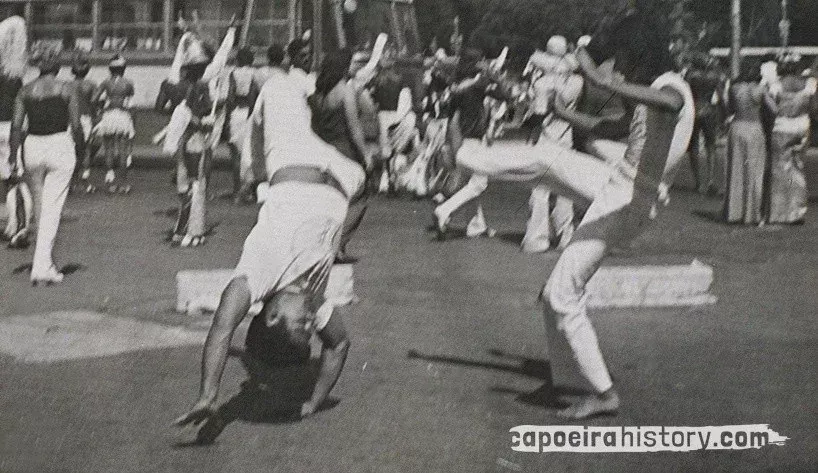By Juliana Pereira & Matthias Röhrig Assunção.
The blocos de embalo are carnival associations that do not compete in Rio de Janeiro’s official parade of the samba schools. According to Jornal do Brasil, the bloco de embalo “has no annual theme and the aims and criteria are samba and excitement, music, and drums. They are not concerned with costumes and banner”. In Rio de Janeiro, the two most popular and well-known blocos de embalo in the second half of the 20th century were Cacique de Ramos (“The Indian chief from Ramos”, a neighbourhood in the northern zone of the city) and the Bafo da Onça (“Breath of the Jaguar”, located in Catumbi). These two blocos also played a prominent role in the dissemination and display of capoeira in carnival parades.
For Cacique de Ramos, the participation of capoeiristas in the parades probably dates back to the 1960s, though we do not yet have the exact date. For many capoeiristas, carnival was, above all, an occasion to play capoeira in the street, especially in a bloco de embalo, with more freedom, such as Cacique, as stated by M. Burguês:
The parade, no way! During carnival we went to play capoeira. Nobody wanted to parade. Sometimes I paraded in the Cacique de Ramos, in the capoeira ala [“wing” or section of the parading group], which was led by Mestre Mintirinha. […] We played capoeira dressed as Indians. […] Some played berimbau and the others played capoeira. There were thirty, forty capoeiras… That was a wing that Mestre Mintirinha created at Cacique de Ramos, in the [19]70s”


In the capoeira sector, they counted on Otácilio, Lemi, Cirílo, Célio and Paulinho. Paulinho and Euclides, besides participating in choreographic capoeira shows, are emeritus fighters, and Euclides recently won the ‘best capoeirista’ contest, deserving the ‘Berimbau de Prata’ trophy”.

Bibliography
Assunção, M., & Souza, C. E. (2019). Ginga na Avenida: a capoeira no carnaval carioca (1954-1976). Revista Nordestina de História do Brasil, 2(3), 83-103. https://doi.org/10.17648/2596-0334-v2i3-1491
“Blocos”. Jornal do Brasil, 23 de fevereiro de 1979, p. 46
Capoeira. Carnival. Blocos de embalo. Cacique de Ramos. Bafo da Onça. Rio de Janeiro.


